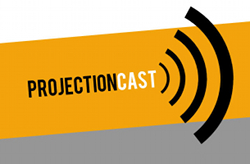Review: A Place at the Table (2012)
Cast: Jeff Bridges, Tom Colicchio, Ken Cook
Director: Kristi Jacobson, Lori Silverbush
Country: USA
Genre: Documentary
Official Trailer: Here
Editor’s Notes: A Place at the Table opens at the Bloor Hot Docs Cinema this Friday, April 5th. For an additional perpective on the film, read Adrian’s review.
A Place at the Table (Jacobson & Silverbrush, 2012) is a documentary about the hunger problem in the United States. It tracks several people and their families from across the country and draws a clear line between hunger, poverty and obesity. The film makes the point of clarifying that childhood obesity is a byproduct of hunger, not the opposite of it. If a family is poor, nutrition takes a back seat to a full stomach and that leads to processed foods and obesity.
The film makes the point of clarifying that childhood obesity is a byproduct of hunger, not the opposite of it. If a family is poor, nutrition takes a back seat to a full stomach and that leads to processed foods and obesity.
The doc is set up like a standard ‘talking heads’ documentary with experts telling us about the statistics, but then it goes a step further. It follows a child in a family that frequently goes hungry, despite working and living multi-generationally (more than one generation in the same house). The little girl sleeps in the same room as her sister with the washing machine and dryer and no bed. They sleep on the floor and her teacher who realizes the child could perform better in class if she weren’t so hungry (the teacher also volunteers for a food bank/delivery service who assists the large amount of people in their town that are unable to provide enough food for themselves and their families), a single mother of two small children who is on public assistance after losing her job who becomes an activist to raise awareness of hunger in the U.S. in an organization that is led by one of the experts featured in the film.
The film also has interviews with actor Jeff Bridges who has been involved in campaigns and organizations to end hunger for the last thirty years as well as chef/Top Chef judge (and executive producer of the film) Tom Colicchio who has also been on the forefront of raising awareness of the hunger epidemic in the U.S.
The solutions put forward could be considered very liberal (in the U.S. anyway…everywhere else it would be common sense) and will therefore rankle some viewers. In a nutshell, they conclude that more Government intervention and more funding to school breakfast and lunch programs (to get healthier foods in them which cost more) and also to stop Federal subsidization of the large farming industries who make the products that go into processed foods and reapply those funds to the smaller fruit and vegetable farms, driving down the costs and making them more accessible to everyone. All of this makes sense, but then the unwillingness of Congress to do any of this because “we can’t afford it” or because they take tons of money from big agriculture and don’t want to lose that funding base.
This is where the film stops being informational and becomes political. It shows the single mother and the group she is with go to Washington D. C. to an event on hunger awareness (sponsored, I’m proud to say, by my Senator, Bob Casey Jr. (D, PA) with several other lawmakers in attendance as well) and has a Congressman throughout the film saying what Congress needs to do to solve the problem.
The film tries to circumvent thought in favor of pure emotionality throughout much of the time. The goal is to take hunger out of the abstract and ‘put a face on it’.
The film tries to circumvent thought in favor of pure emotionality throughout much of the time. The goal is to take hunger out of the abstract and ‘put a face on it’. The faces the filmmakers choose are designed to tug at your heartstrings and bring you over to their side, if you are for some reason opposed to eliminating hunger. When the thought and solutions are introduced later in the film, they sound good because at that point anything that will prevent these kids from being hungry you’re on board for.
The composition of the film is what has become standard in documentaries post-Roger and Me (Moore, 1989) where the talking heads are intercut with footage of the regular people living out the circumstances of the film’s thesis. The plights of the regular people (or, as I like to call them, life experts) are touching and in some cases gut-wrenching, while the analysis of the book experts is impassioned but a bit distanced. Even those that are working side by side with the people who suffer through the effects of hunger daily are still detached because they aren’t living it. The exception is the Congressman who said he and one of his aids went on a food stamp diet for one week and he said he barely made it. He uses that experience to inform the legislation he attempts to get passed.
A Place at the Table works hard to make the audience see that hunger is just a rumbly in your tumbly. It makes life hard, especially for children because it causes developmental issues and makes it difficult for them to concentrate on school because they’re hungry. It also makes the point that if it were just that the U. S. didn’t have enough food, then we would have to work to get more, but it’s not. The U. S. has plenty of food but hunger is intrinsically linked to poverty, which then makes it a political issue and that’s where tackling it derails. Although A Place at the Table offers nothing new in the way of documentary structure, storytelling or editing, it does present a compelling look at persistent hunger and food insecurity in the U. S. and offers some good (albeit idealistic) solutions to fix the problem.





















 Review: To the Wonder (2012)
Review: To the Wonder (2012) Review: Antiviral (2012)
Review: Antiviral (2012) TIFF Spotlight Japan Review: Late Autumn (1960)
TIFF Spotlight Japan Review: Late Autumn (1960) TIFF Spotlight Japan Review: The Warped Ones (1960)
TIFF Spotlight Japan Review: The Warped Ones (1960) Review: Evil Dead (2013)
Review: Evil Dead (2013)




